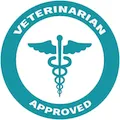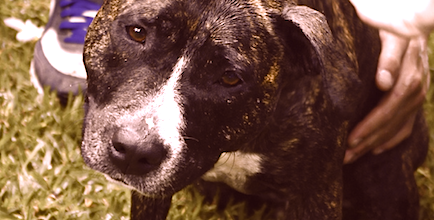Unethical Euthanasia Fees: Where’s the Compassion?
When I found out a veterinarian was charging clients an extra fee for the “privilege” of being with their pets while they were euthanized, I got angry.

I heard about a dog in trouble in another state. Sadly, euthanasia was the right choice for this elderly canine.
The caretaker wanted to be with his pet while he was euthanized. But he was told there would be an additional fee if he wanted to “witness” the euthanasia. The man could not afford this fee, and so his pet was euthanized without him present. This lack of compassion made the man suffer more than was necessary.
This is the kind of story that makes our veterinary profession look terrible. And it makes my blood boil.

Don’t leave your pet’s safety to chance
Sign up for Petful recall alerts today.

Researching Euthanasia Fees
Going undercover, I did my own little 60 Minutes investigation. I called a number of veterinary hospitals in 2 different states.
While conducting my survey, I did not reveal that I was a veterinarian, but my inquiry was legitimate:
“I have a 14-year-old Cocker Spaniel who may be looking at the end of his life. If I had to put him to sleep, what would happen at your hospital? Could I be with my pet during euthanasia?” I asked.
“Of course” was the answer across the board.
“And what do I do after?” I asked.
The answer: “Home burial, group cremation, private cremation. I can give you those fees now, or you may want to call back. And I am sorry.”
The women on the phone treated these end-of-life decisions for my pet with deep respect, dignity and sympathy. Although there were some mild discrepancies in pricing, I received sensitive and detailed information about euthanasia protocols within 1 minute or less from every receptionist.
And yes, I timed these phone calls and documented them. Maybe those journalism courses in college paid off after all.

What Is Compassion?
I recently read an article, “The Key to Compassion,” by Kathleen Ruby. She wrote that one definition of compassion is “to suffer together,” that it is the feeling that arises when a person is confronted with another’s suffering and feels motivated to relieve the suffering.
Veterinarians have a difficult, dual job when it comes to compassion. We must show compassion to both your pet and you.
The pet’s needs come first — that’s the oath we take. But we have an equal burden to show compassion to caretakers, even if their ideas are different from our own at times. We must suffer together by showing compassion to both pets and humans.
Compassion Isn’t Always Easy
Here’s the crux of this mess. Veterinarians need to be compassionate always, even when our daily life of caring for pets and people is trying, frustrating and difficult. And painful. And sad.
If a price tag comes with some of our services, it must be handled with compassion and caring.
I deal with death every day. As I have written before, I take end-of-life decisions seriously and ethically. The man not being with his dying pet because of finances made me think long and hard about ethics and compassion — and this man was not treated compassionately.
Compassion Is Primary
My phone calls about euthanasia protocols gave me a good feeling, however, that most practices try to handle the hardest moments for anyone with compassion. I hope most of you reading this have received compassion from your vets in the past.
On a busy day, vets need to adjust and regulate our internal compassion clock about every 15 minutes, but never turn it off. I wish all vets were born with an internal alarm that goes off when we are having a compassion burnout problem. This alarm clock should come with our veterinary degree. If the clock wasn’t attached to our diploma, I’m hoping most ethical vets have earned this clock along their tough and compassionate road.
So note to self: Feel motivated to relieve the suffering of others. Always.
On second thought, this should be a note for the world.
References
- Greater Good in Action. “What Is compassion?” March 1, 2004.
- Ruby, Kathleen. “The Key to Compassion.” Veterinary Team Brief, July 2015. Volume 3, Number 6.








